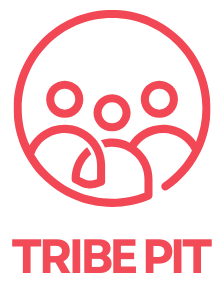Starbucks has long been a leader in creating memorable customer experiences, but its innovation doesn’t stop at great coffee. In 2008, Starbucks launched ‘My Starbucks Idea,’ a groundbreaking platform designed to strengthen community engagement by inviting customers to contribute ideas for improving the brand. This initiative not only enhanced customer loyalty but also showcased Starbucks’ commitment to listening to its community.
What Is ‘My Starbucks Idea’?
‘My Starbucks Idea’ was an online platform where customers could share, discuss, and vote on ideas to improve Starbucks products, services, and overall experience. By opening up a two-way dialogue with its customers, Starbucks empowered its community to actively participate in shaping the brand.
Key Features of the Platform:
- Idea Submission: Customers could submit suggestions across various categories like drinks, food, technology, and store atmosphere.
- Voting System: Users could vote on ideas they liked, giving Starbucks a clear view of what resonated with their audience.
- Transparency: Starbucks provided updates on implemented ideas, showing customers how their feedback made a difference.
How Starbucks Strengthened Community Engagement
‘My Starbucks Idea’ wasn’t just about gathering feedback; it was about building a stronger connection with the Starbucks community. Here’s how it achieved that:
1. Empowering Customers
By inviting customers to contribute ideas, Starbucks gave its community a sense of ownership in the brand. This empowerment fostered loyalty and made customers feel like valued stakeholders.
2. Creating a Feedback Loop
Starbucks actively responded to submissions, providing updates on which ideas were being implemented. This transparency built trust and encouraged more participation.
3. Highlighting Customer Contributions
Ideas that became reality were celebrated, often with public acknowledgment of the contributors. This recognition motivated customers to engage more actively with the platform.
4. Focusing on Co-Creation
Starbucks positioned itself as a brand that listens and evolves based on customer input. This co-creation approach turned the Starbucks community into collaborators rather than passive consumers.
Examples of Ideas That Became Reality
Several popular features and products originated from ‘My Starbucks Idea,’ including:
- Splash Sticks: A customer-suggested solution to prevent coffee spills, now a staple at Starbucks stores.
- Free Wi-Fi: A highly requested feature that became a standard offering, significantly enhancing the in-store experience.
- Rewards Program Enhancements: Ideas from customers helped shape the Starbucks Rewards Program, making it more appealing and user-friendly.
The Impact of ‘My Starbucks Idea’
The platform was a significant success, both in terms of community engagement and business outcomes:
- Over 150,000 Ideas Submitted: The overwhelming participation highlighted the enthusiasm of Starbucks’ community.
- Increased Loyalty: By involving customers in decision-making, Starbucks deepened its relationship with its audience.
- Enhanced Brand Perception: The initiative showcased Starbucks as a customer-centric brand that values innovation and collaboration.
- Actionable Insights: Starbucks gained valuable insights into customer preferences, helping them prioritize improvements that resonated with their audience.
Lessons for Other Brands
Starbucks’ success with ‘My Starbucks Idea’ offers valuable lessons for brands looking to enhance community engagement:
- Listen Actively: Create platforms where customers can share their ideas and feedback.
- Be Transparent: Show customers how their input is being used to make changes.
- Recognize Contributions: Celebrate and reward community members for their ideas.
- Focus on Co-Creation: Turn your customers into collaborators by involving them in the evolution of your brand.
- Act on Insights: Use the feedback gathered to implement meaningful changes that enhance the customer experience.
Final Thoughts
‘My Starbucks Idea’ is a prime example of how brands can use community engagement to foster loyalty and drive innovation. By empowering its customers, Starbucks not only strengthened its relationship with its community but also improved its products and services in ways that resonated deeply with its audience. For businesses looking to build stronger connections with their customers, Starbucks’ approach provides a powerful blueprint for success.



